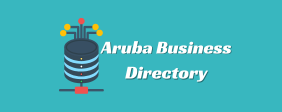When running an online store with WooCommerce, product What Resolution images play a vital role in attracting and converting customers. High-quality images help shoppers evaluate products more effectively, reduce returns, and increase trust in your brand. However, choosing the right image resolution is crucial—not only for displaying clear, detailed photos but also for maintaining site performance and loading speed. This guide explains what resolution is best for WooCommerce product images, along with practical tips for image optimization.
Why Image Resolution Matters for WooCommerce What Resolution
Customer Experience: Clear, sharp images let buyers see product details, textures, and colors accurately.
Site Performance: Large, unoptimized images slow down your site, causing higher bounce rates and lower SEO rankings.
Responsiveness: WooCommerce sites must look great on desktops, tablets, and smartphones, requiring flexible image sizing.
Zoom Features: Many WooCommerce themes offer zoom or lightbox features, which need high-resolution images to work effectively.
Understanding Image Resolution and Dimensions
Image resolution refers to the number of pixels in an image, commonly represented as width × height (e.g., 800×800 pixels). The higher the resolution, the more detail the image holds, but also the larger the file size.
WooCommerce recommends different image sizes for different purposes:
Thumbnail images: Small images shown in product listings or widgets.
Catalog images: Medium-sized images displayed on category or shop pages.
Single product images: Large images used on individual product pages.
Recommended WooCommerce Image Sizes (Pixels) What Resolution
While you can customize image sizes based on your theme and needs, WooCommerce provides default suggestions:
Image Type Recommended Dimensions Purpose
Thumbnail 150 × 150 Small images in galleries, widgets
Catalog (Shop) 300 × 300 to 400 × 400 Grid or list view on shop/category pages
Single Product 800 × 800 to 1000 × 1000 Main product display page images
Choosing the Best Resolution for Your Store
1. Single Product Images: High-Resolution for Detail
Your single product images should be the highest e-commerce photo editing resolution among all your images because customers rely on these for examining the product closely.
Recommended: At least 800×800 pixels, but many stores use 1000×1000 pixels or higher to support zoom-in features.
Higher resolution means shoppers can zoom in without pixelation, improving confidence.
However, avoid excessively large images (e.g., 4000×4000 pixels) unless you optimize them well, as this slows page load times.
2. Catalog Images: Balanced Quality and Speed
Catalog images appear on product listing pages and should balance quality and file size.
Recommended: Between 300×300 and 400×400 pixels.
This size is large enough to show product details but small enough to load quickly.
Use consistent aspect ratios to keep your shop page looking neat.
3. Thumbnail Images: Small and Fast
Thumbnails are tiny images shown in widgets, related color correction for youtube creators what you need to know products, or mini carts.
Recommended: Around 150×150 pixels.
These images are small previews, so don’t need high resolution.
Make sure thumbnails are clear and not pixelated, especially on retina displays (see next section).
Retina Displays and Image Resolution What Resolution
Retina or high-DPI (dots per inch) displays show images at double the pixel density, requiring higher resolution images to maintain sharpness.
For example, if your catalog images display at 300×300 pixels, upload images at 600×600 pixels.
WooCommerce and WordPress handle responsive image loading, but providing high-res originals ensures crispness on all devices.
Image File Formats and Optimization
Besides resolution, file format and optimization impact quality and performance:
Use JPEG for photographs due to good compression marketing list with minimal quality loss.
Use PNG for images requiring transparency (logos, icons).
Compress images with tools like TinyPNG, ImageOptim, or Squoosh to reduce file size without visible quality loss.
Consider WebP format for even better compression and quality; many WooCommerce themes and plugins support WebP.
How to Set Image Sizes in WooCommerce
WooCommerce allows you to customize image sizes:
Go to WooCommerce > Settings > Products > Display (or Appearance > Customize > WooCommerce > Product Images in recent versions).
Set the dimensions for Thumbnail, Catalog, and Single Product images.
Save changes, then regenerate thumbnails using a plugin like Regenerate Thumbnails to apply new sizes to existing images.
Tips for Maintaining Image Quality Across Devices
Always upload high-resolution originals; WordPress will create resized versions automatically.
Keep the aspect ratio consistent (usually square for product images) to avoid distorted or stretched photos.
Test your site on different devices (desktop, tablet, mobile) to ensure images display crisply.
Enable lazy loading to speed up initial page loads by loading images as users scroll.
Summary Table: Ideal WooCommerce Image Resolutions
Image Type Recommended Resolution (Pixels) Purpose Retina Size (Pixels)
Thumbnail 150 × 150 Small preview images 300 × 300
Catalog (Shop) 300 × 300 to 400 × 400 Category/shop page grids 600 × 600 to 800 × 800
Single Product 800 × 800 to 1000 × 1000 Main product display 1600 × 1600 to 2000 × 2000
Final Thoughts
Choosing the right resolution for WooCommerce product images is a balancing act between image quality and site performance. Use higher resolution for single product pages to allow zooming and detailed viewing, medium-sized images for catalog pages to keep things visually appealing and fast, and small thumbnails for previews.
